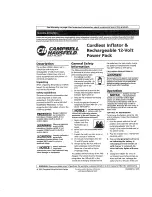
3
IMPORTANT & SAFETY INSTRUCTIONS
1) SAVE THESE INSTRUCTIONS — This manual contains important safety and operating
instructions for power supply.
2) Do not expose power supply to rain or snow.
3) Use of an attachment not recommended or sold by the power supply manufacturer may result
in a risk of fire, electric shock, or injury to persons.
4) Do not disassemble power supply; take it to a qualified serviceman when service or repair is
required. Incorrect reassembly may result in a risk of electric shock or fire.
5) To reduce risk of electric shock, unplug power supply from outlet before attempting any main-
tenance or cleaning. Turning off controls will not reduce this risk.
6) Never place marine power supply directly above battery; gases from battery will corrode and
damage power supply.
7) Never allow battery acid to drip on power supply when reading gravity or filling battery.
8) O/P CONNECTION PRECAUTIONS
Connect and disconnect DC output connections only after setting the power supply
switch to the off position.
GROUNDING AND AC POWER CORD CONNECTION INSTRUCTIONS — The plug must be plugged
into an outlet that is properly installed and grounded in accordance with al local codes and ordinances.
DANGER — Never alter AC cord or plug provided — if it will not fit outlet, have proper cord installed by a
qualified electrician. Improper connection can result in a risk of an electric shock.
Analytic Systems does not recommend the use of the PWS1510 Series Power Supplies in life support ap-
plications where failure or malfunction of this product can be reasonably expected to cause failure of the life
support device or to significantly affect its safety or effectiveness. Analytic Systems does not recommend the
use of any of its products in direct patient care.
Examples of devices considered to be life support devices are neonatal oxygen analyzers, nerve stimulators
(whether used for anesthesia, pain relief, or other purposes), autotransfusion devices, blood pumps, defibril-
lators, arrhythmia detectors and alarms, pacemakers, hemodialysis systems, peritoneal dialysis systems,
neonatal ventilator incubators, ventilators for both adults and infants, anesthesia ventilators, and infusion
pumps as well as any other devices designated as “critical” by the U.S. FDA.

























